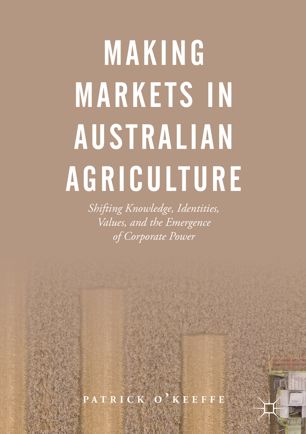

Most ebook files are in PDF format, so you can easily read them using various software such as Foxit Reader or directly on the Google Chrome browser.
Some ebook files are released by publishers in other formats such as .awz, .mobi, .epub, .fb2, etc. You may need to install specific software to read these formats on mobile/PC, such as Calibre.
Please read the tutorial at this link. https://ebooknice.com/page/post?id=faq
We offer FREE conversion to the popular formats you request; however, this may take some time. Therefore, right after payment, please email us, and we will try to provide the service as quickly as possible.
For some exceptional file formats or broken links (if any), please refrain from opening any disputes. Instead, email us first, and we will try to assist within a maximum of 6 hours.
EbookNice Team

Status:
Available4.7
18 reviewsThis book provides a genealogical study of Australian agricultural restructuring, focusing on the case study of wheat export market deregulation. This policy shift was implemented in 2008, ending 60 years of statutory wheat marketing. At the time, policy makers claimed that market liberalisation would empower individual growers, providing them with choice and freedom through uninhibited participation in markets. However, regional wheat markets have become concentrated, and are increasingly controlled by a small number of transnational agribusiness firms, which have been increasingly active in setting the policy agenda in Australian agriculture.
The book delves into the discursive construction of policy truths such as efficiency, competition, and the consumer, to understand how this shift was made possible, whose interests have been served, and what the implications of this shift have been. This book focuses on the machinations which contributed to this shift by examining the construction of knowledge, values and identities, which have helped to make the transition from the public to the private appear as a logical, common sense solution to the challenges facing Australian agriculture.
The author shows how governmental technologies such as audit, cost-benefit analysis, performance objectives and the consumer were used to make this reality operable. In doing so, he argues that this shift should be viewed as part of the broader restructuring of Australian society, which has facilitated the transference of economic and policy making power from the public to the private.